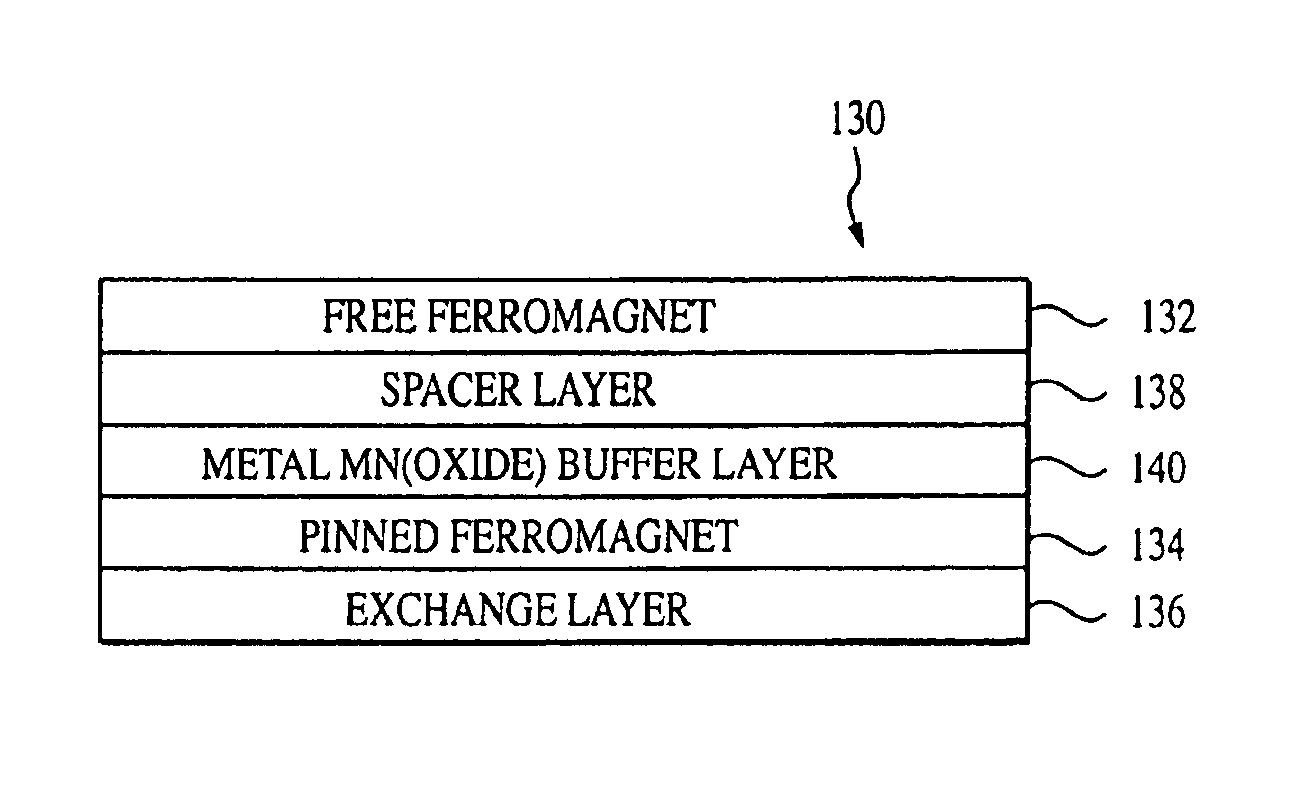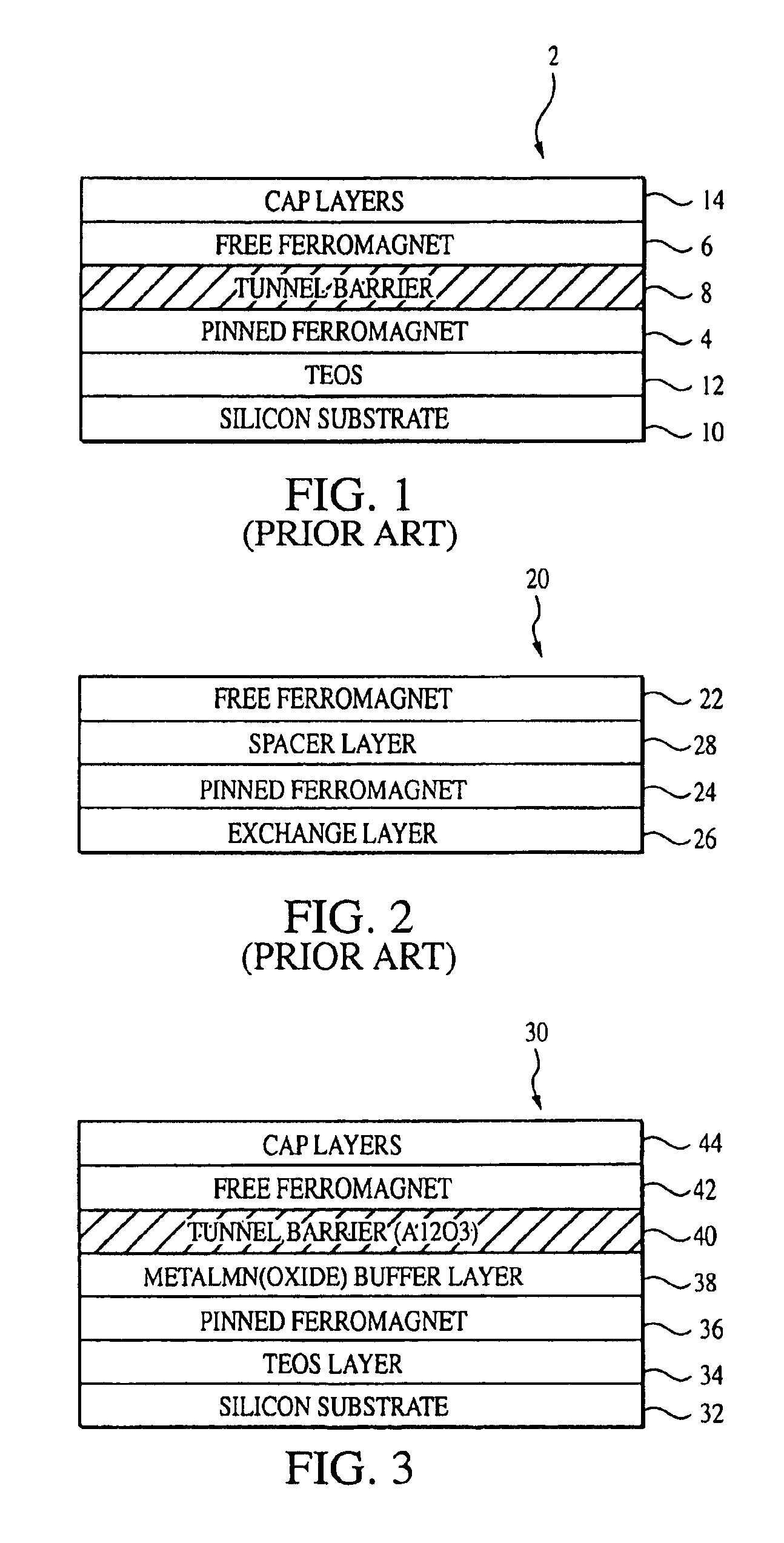Oxide buffer layer for improved magnetic tunnel junctions
a buffer layer and tunnel junction technology, applied in the field of magnet film layers, can solve the problems of undesirable coupling, achieve the effects of reducing the grain size of the non-magnetic layer, and reducing the surface roughness
- Summary
- Abstract
- Description
- Claims
- Application Information
AI Technical Summary
Benefits of technology
Problems solved by technology
Method used
Image
Examples
Embodiment Construction
Referring to FIG. 3, a cross section is shown of an exemplary memory cell 30 constructed in accordance with an embodiment of the present invention. The memory cell 30 is formed over a substrate, for example, a silicon substrate 32. Insulating layers such as the illustrated TEOS layer 34 are formed over the substrate 32. A pinned ferromagnetic layer 36, typically formed of one or more layers of a ferromagnetic material and one or more layers of an anti-ferromagnetic material, is formed over the TEOS layer 34 and has a fixed magnetic orientation.
A metal manganese layer, such as FeMn (50:50), is deposited on the pinned ferromagnetic layer 36. FeMn layers can be deposited by sputtering, for example, or by other thin film fabrication techniques known in the art. Subsequent natural and / or assisted oxidation results in the formation of a metal manganese oxide (FeMnO) buffer layer 38.
The buffer layer 38 generally is formed of metal-manganese oxides or mixed metal-manganese oxides. The buffe...
PUM
| Property | Measurement | Unit |
|---|---|---|
| thickness | aaaaa | aaaaa |
| thickness | aaaaa | aaaaa |
| thick | aaaaa | aaaaa |
Abstract
Description
Claims
Application Information
 Login to View More
Login to View More - R&D
- Intellectual Property
- Life Sciences
- Materials
- Tech Scout
- Unparalleled Data Quality
- Higher Quality Content
- 60% Fewer Hallucinations
Browse by: Latest US Patents, China's latest patents, Technical Efficacy Thesaurus, Application Domain, Technology Topic, Popular Technical Reports.
© 2025 PatSnap. All rights reserved.Legal|Privacy policy|Modern Slavery Act Transparency Statement|Sitemap|About US| Contact US: help@patsnap.com



